- Countries
- Login
Overview
Voles can be found in every state of the mainland U.S. and Canada. There are over 23 species of voles (genus Microtus) in North America. Voles are frequently mistaken for shrews, field mice and deer mice. While similar, distinguishing features include longer, coarser hair, and a larger head size. For more information, see our Vole Taxonomy & Behavior Technical Sheet.
- Vole
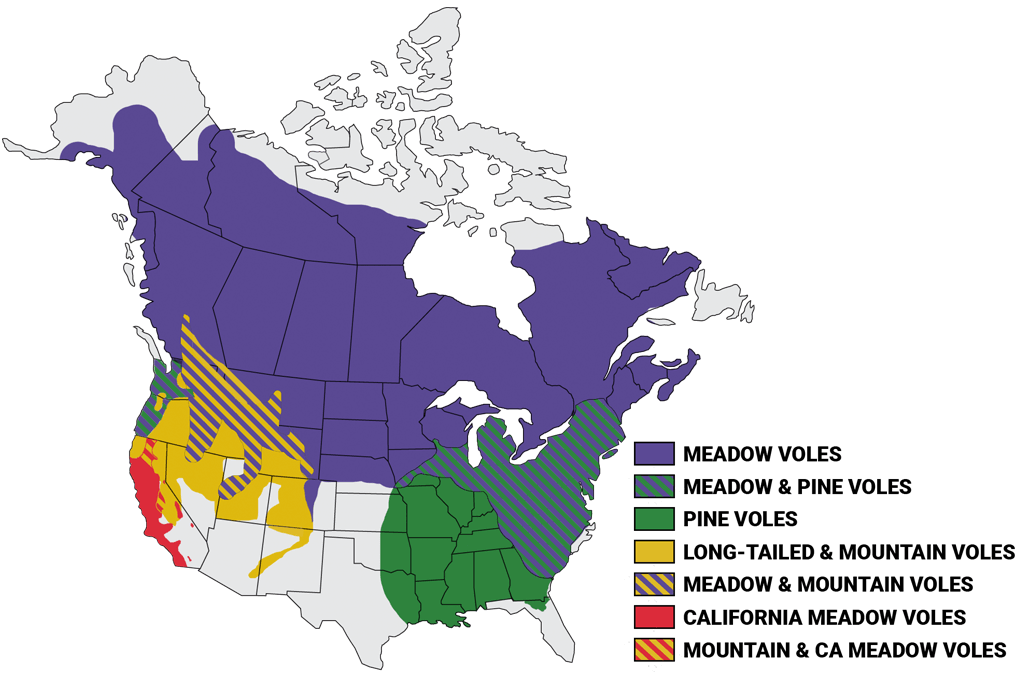
Voles can often be found in wild and landscape environments with rock structures nearby. Vole activity is more frequently visible during winter months and in the spring, immediately after snow melt. Voles cause economic damage in many important areas, some of which include orchards, commercial nurseries, Christmas tree farms and forestry plantations.
Rozol® Vole Bait is registered for use in these usage segments in most states.
Restricted Use Pesticide
Rozol Vole Bait (EPA Reg. #7173-242) is a Restricted Use Pesticide for use solely by licensed pesticide applicators or persons under their direct supervision and only for those uses covered by the Certified Applicator's Certificate. It is approved for use in all states except for Hawaii and the District of Columbia. It is the responsibility of the user to read and follow all label directions.
Damage
- Voles can cause extensive damage to orchards, ornamentals and tree plantings by gnawing on roots and on the bark of seedlings and mature trees (called girdling).
- Voles consume foliage, seeds, stems, bulbs and small roots and girdle large roots, which disrupts the tree’s flow of nutrients and water. Voles can kill trees and smaller plantings, as well as cause foliage and production loss, and the onset of root disease by exposing vulnerable tissue and creating air pockets.
- Because it occurs underground, root damage is harder to detect. By the time weak, unhealthy trees are noticed, root damage is often extensive. Trees experiencing root damage from voles exhibit stunting and foliage reduction, resulting in production losses.
- In a study1 on McIntosh orchards in New York, vole densities of up to 400 per acre led to major production losses. During the second year, the highest vole population reduced fruit yield by 65% and increased undersized fruit from 3.1 to 57% – reducing income by $2,745 per acre.
- Pine voles (Microtus pinetorum) also build extensive runway and tunnel systems. In the Willamette Valley, voles inflicted varying degrees of damage on 40-50% of grass seed acreage (a $300 million a year crop),2 leading to stand loss as high as 60%.3
- Meadow voles (Microtus pensylvanicus) can cause unsightly runway damage to lawns and golf courses.
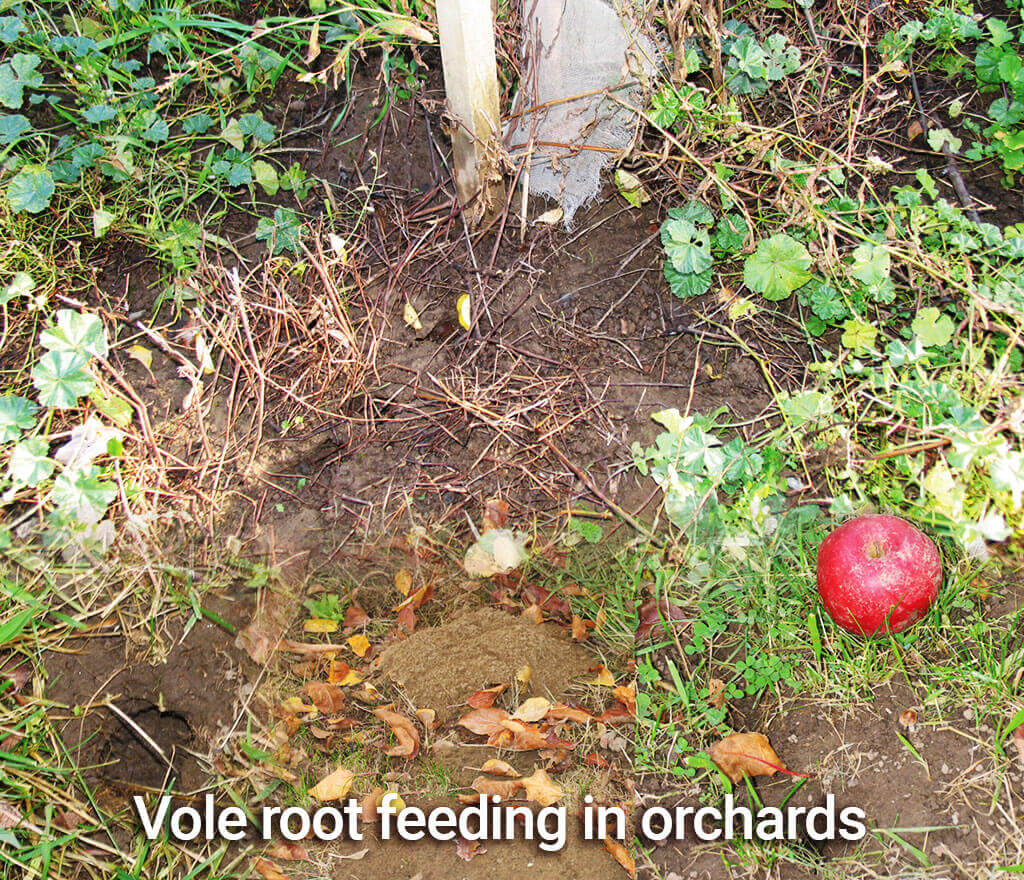
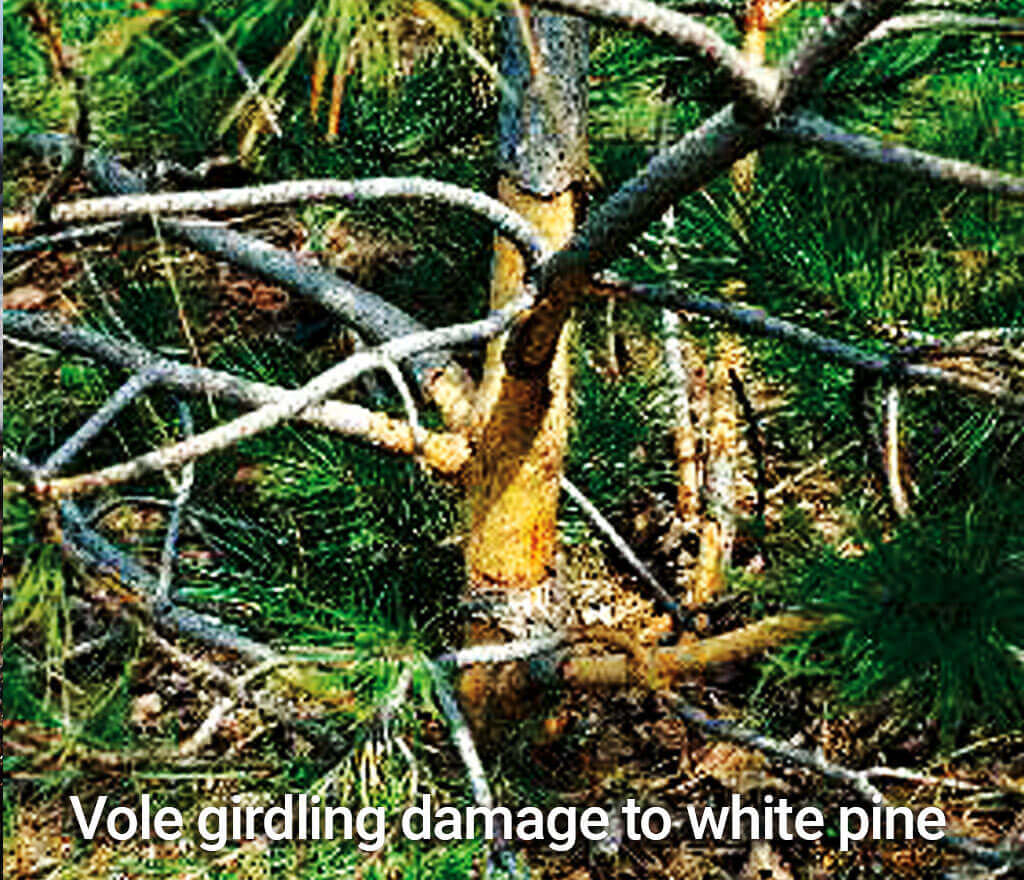
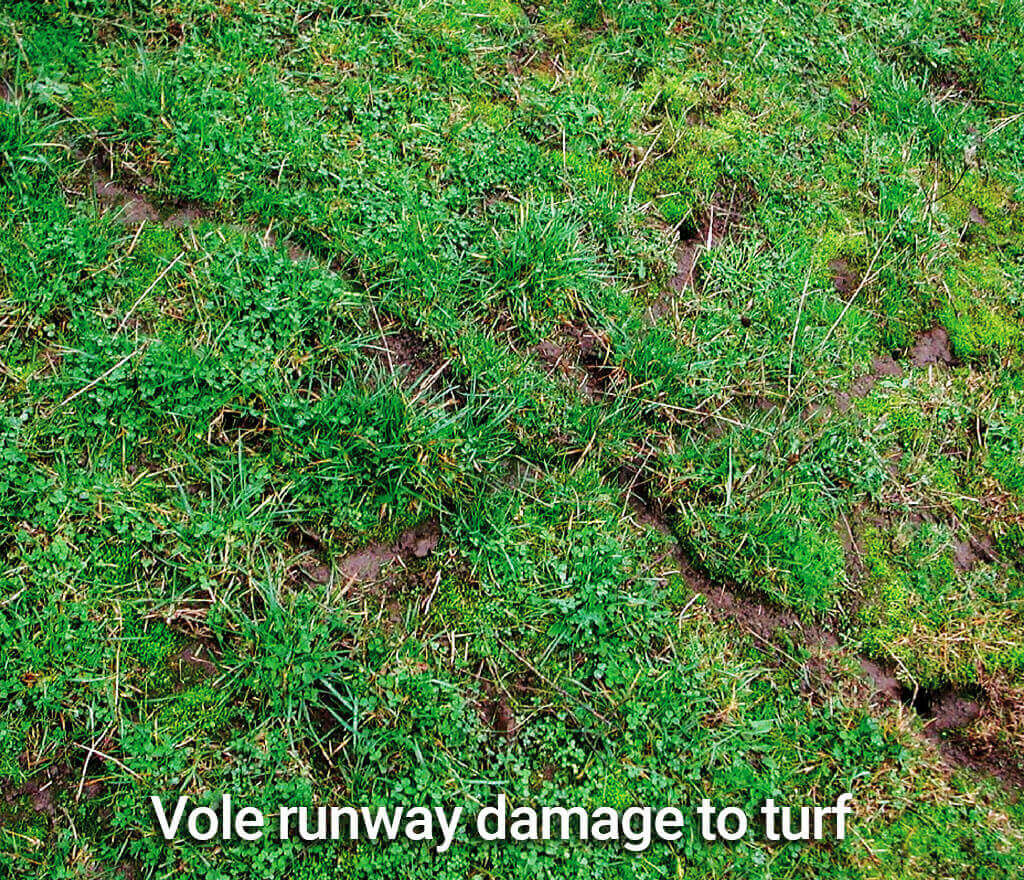
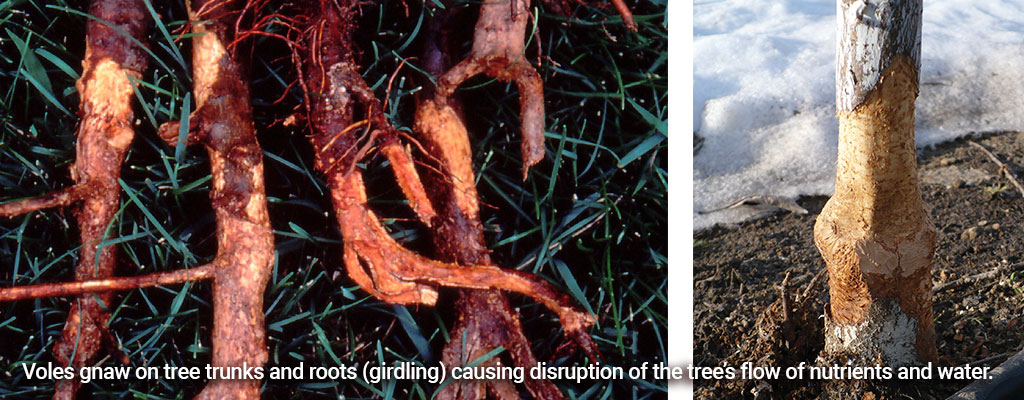
Alternative Methods of Vole Control
- Wire mesh guards and plastic bands can be expensive and labor intensive to maintain. They may provide marginal protection against girdling, but do not protect against burrowing access and root damage.
- Repellents such as thiram (a fungicide) and capsaicin (the ingredient that makes chili peppers hot) offer inconsistent data on effectiveness.
- Fumigants are usually not effective because the complexity and shallow depth of vole burrow systems allow fumigants to escape. They are also very costly.
- Anticoagulant rodenticides such as chlorophacinone (the active ingredient in Rozol baits) and diphacinone are restricted-use products when used for vole control.
Rozol Vole Bait Usage Guide
Approved in all states except: HI and the District of Columbia.
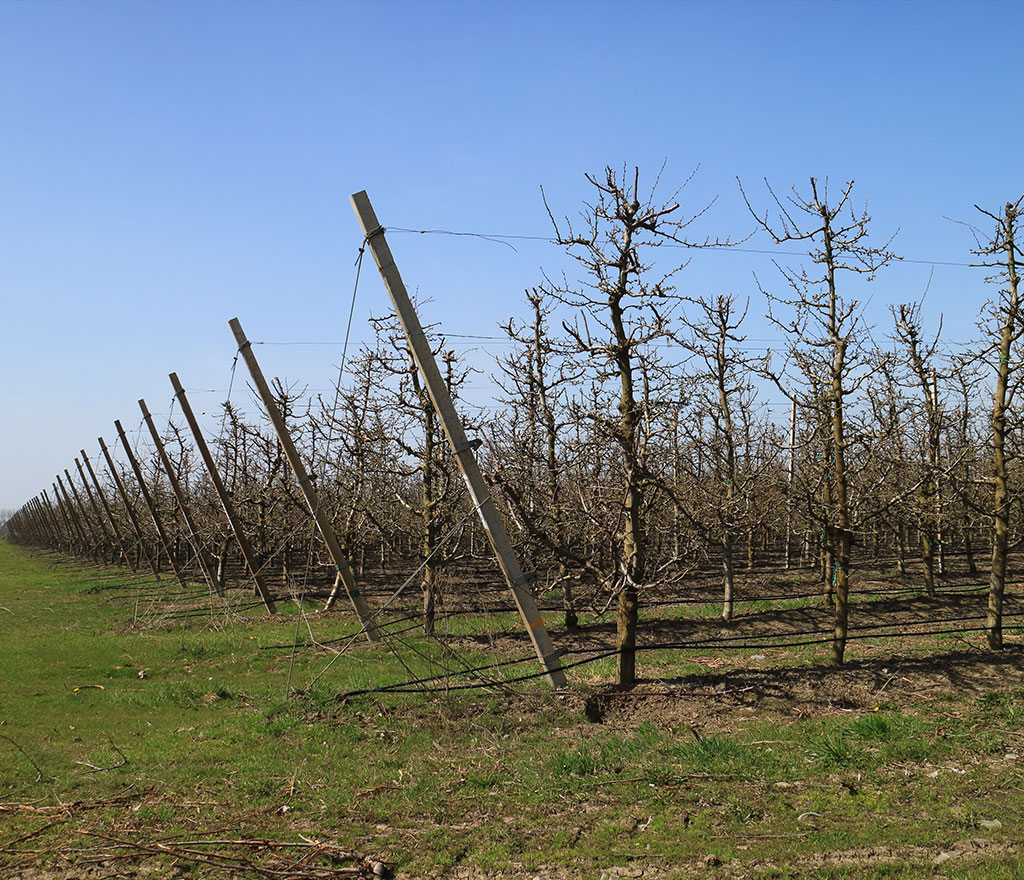
Orchards
Rozol Vole Bait is labeled for control only of voles in pome fruit (apple, pear) and stone fruit (peach, cherry, apricot, plum, prune, and nectarine) tree orchards. Apply after fall harvest (including drops), before new spring growth, and during which three consecutive days of rain-free and snow-free weather are expected. Do not apply within 50 feet of any body of surface water or where raptors are actively feeding on voles. Do not apply over bare ground or crops not specified above. Do not allow animals to graze in treated areas. Do not use hay cut after application for feed or bedding. To avoid exposing non-target organisms, follow the instructions in the Pesticide Disposal section of the label to ensure proper cleanup of any bait for reuse or disposal. Apply only by hand spot baiting and ground broadcasting. Do not apply aerially. In Colorado, Florida, New York and Vermont, only apply by hand spot baiting.
Application directions: Before application, examine orchard floor to locate trails and runway systems to be treated.
Hand spot baiting: Place 1-1/2 ounces of bait (6 tablespoons) in each active hole, trail or runway (do not exceed 10 pounds per acre). Cover each placement with grass or shingle to avoid exposing non-target organisms, or place bait in a tamper-resistant bait station.
Ground broadcast baiting: Using a commercial spreader, uniformly apply 10 pounds per acre. If populations are high, make a second application 1-2 months after the first. In states east of the Mississippi River, infestations of pine vole (Microtus pinetorum) may require higher application rates of 20 pounds per acre. The maximum application rate is 40 pounds per acre per year for pine voles, and 20 pounds per acre per year for other voles. Ground broadcast is not permitted in CO, FL, NY or VT.
Aerial broadcast baiting (WA and ID only): Apply at the rate of 10 pounds per acre. If infestations are high, make a second application 1-2 months following the first application. The maximum application rate is 20 pounds per acre per year. View labels Washington (EPA SLN No. WA 070019) and Idaho (EPA SLN No. ID 190004).
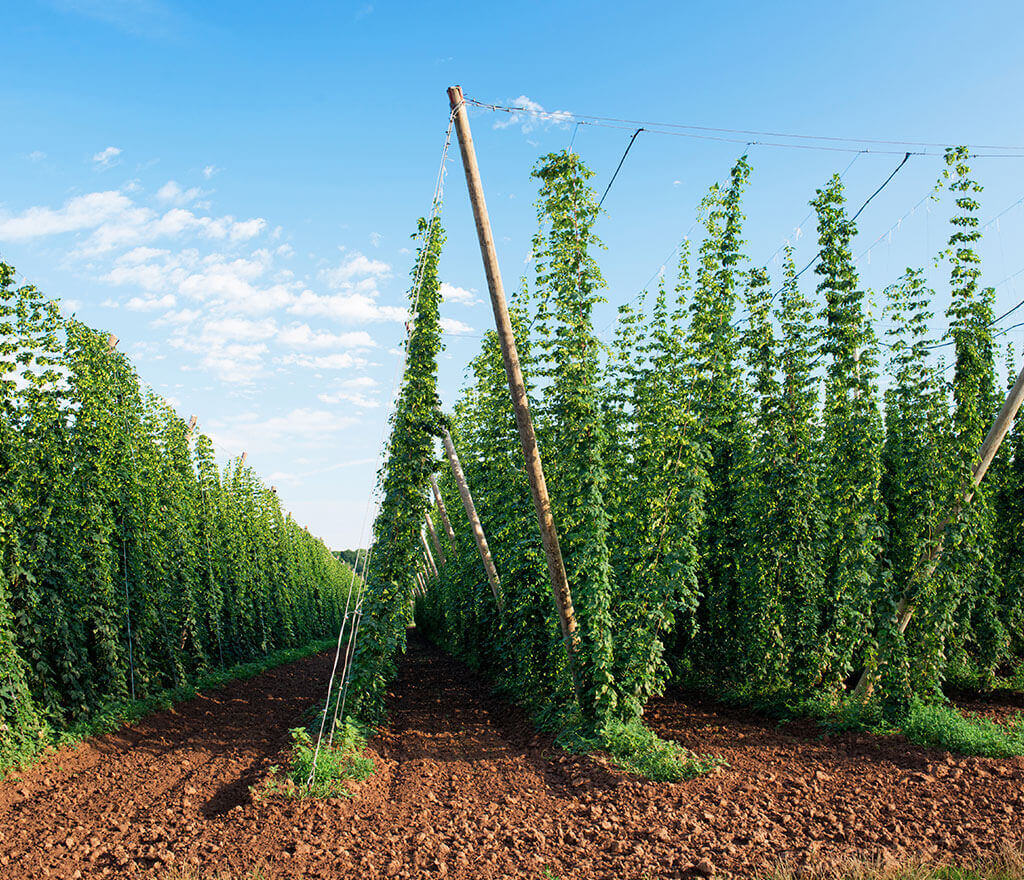
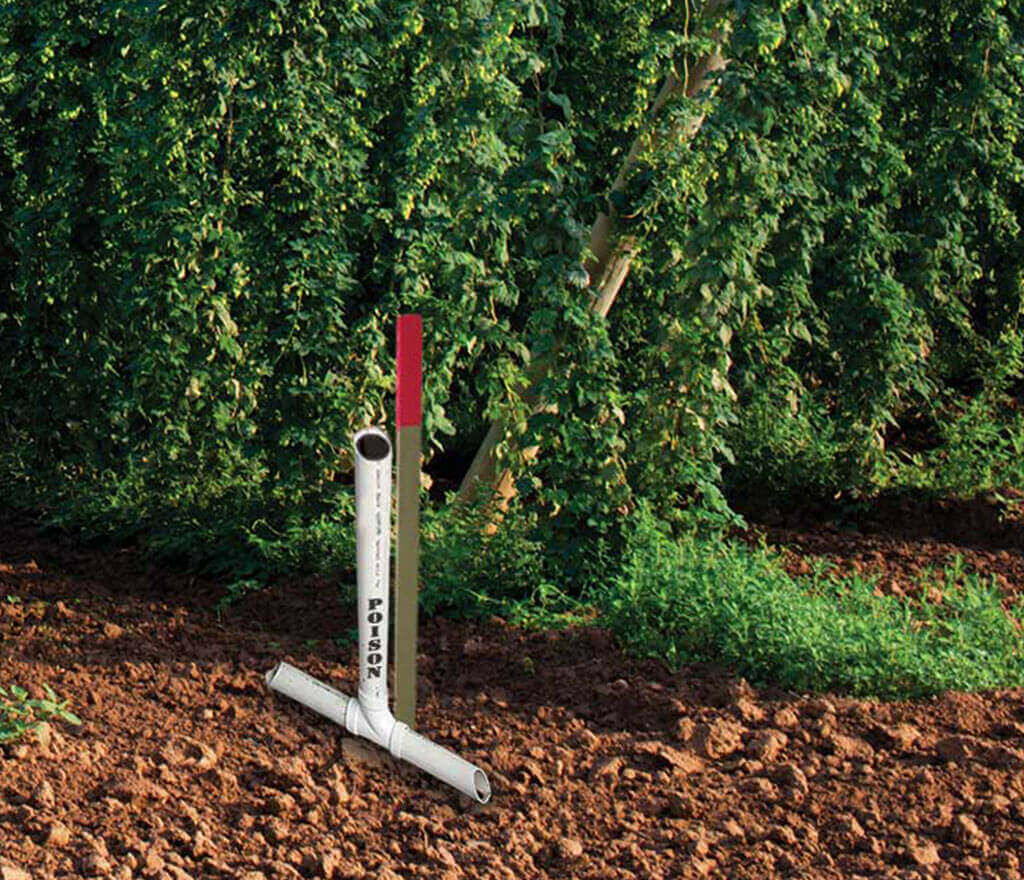
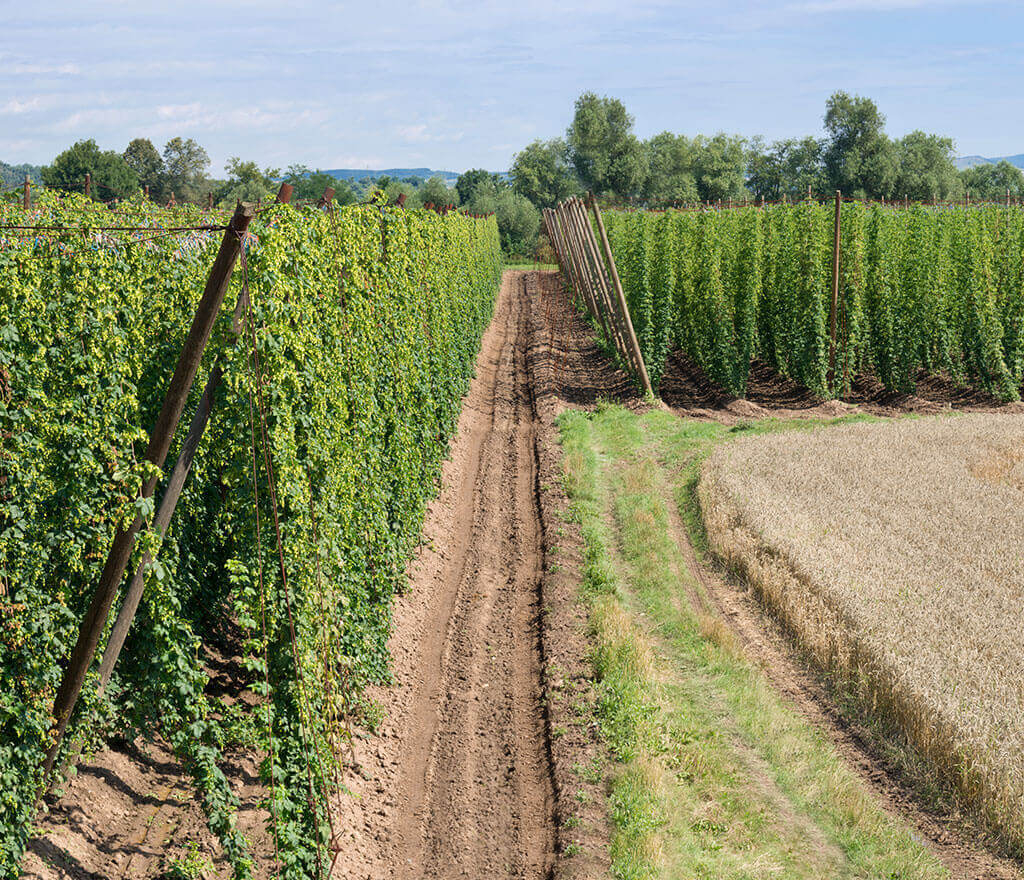
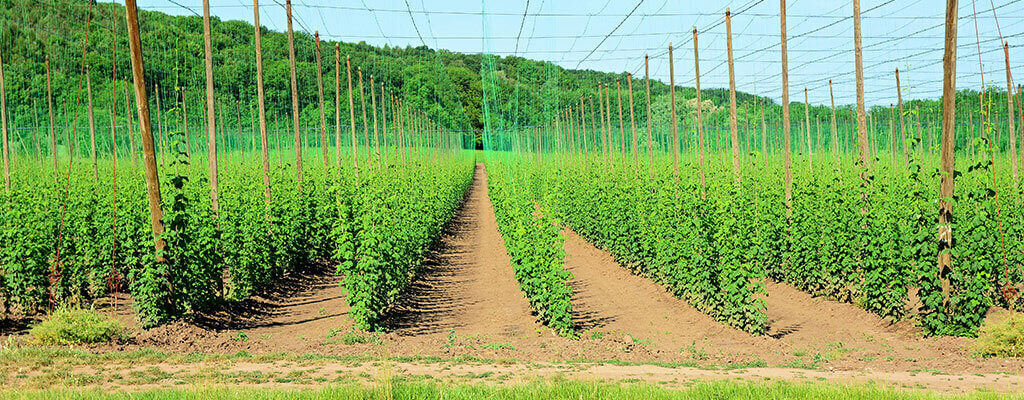
Hops
Rozol Vole Bait is registered for the control of voles and deer mice in hop yards post-harvest or dormant season in Washington (EPA SLN No. WA 180006) and Idaho (EPA SLN No. ID 180006). It can be applied by hand spot baiting, ground and aerial broadcast. View labels and more information.
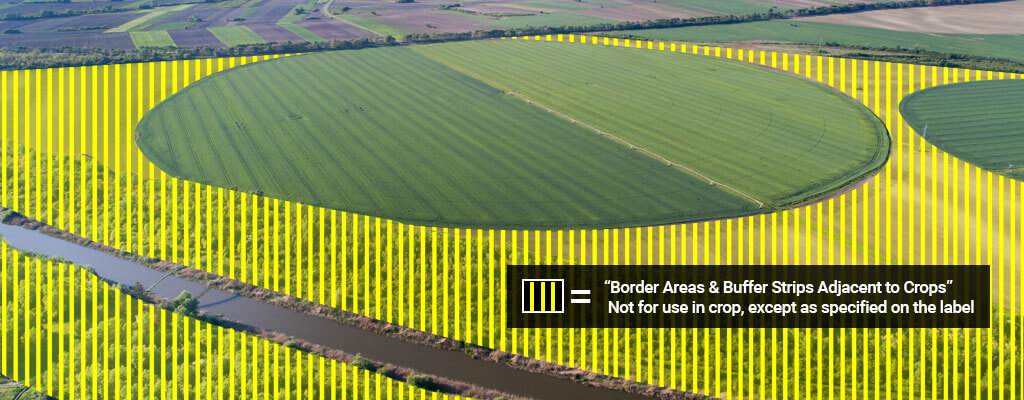
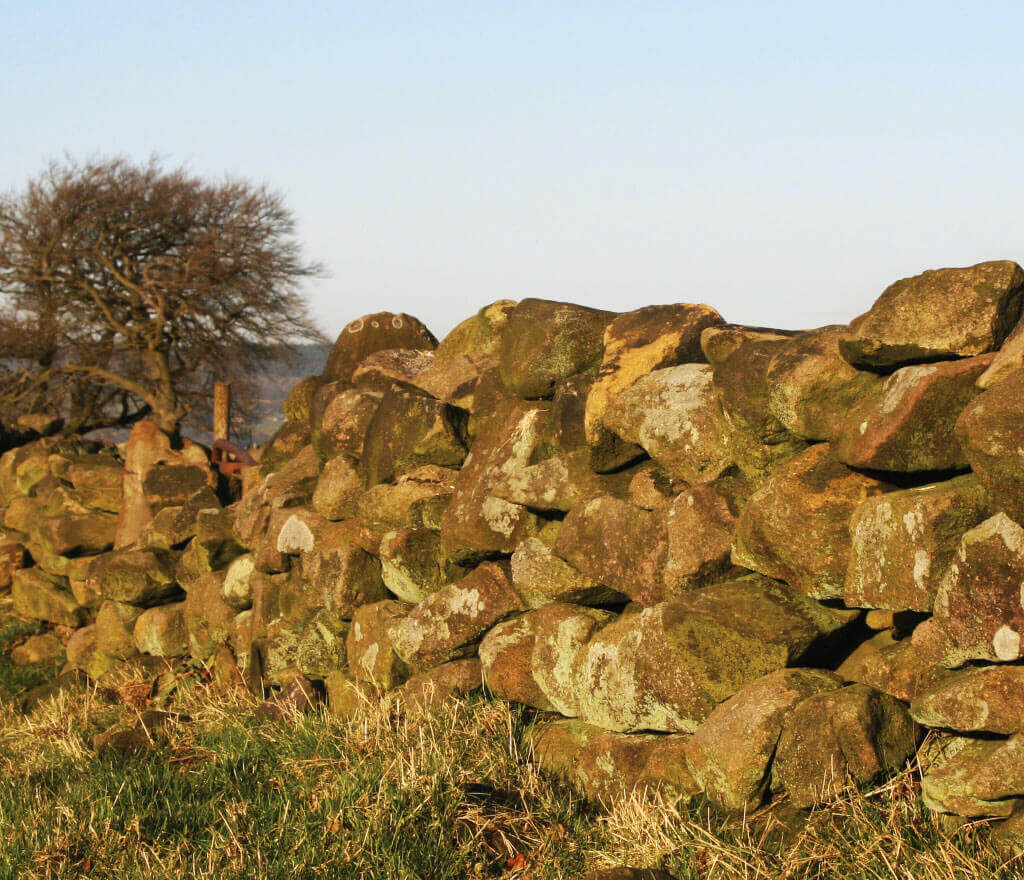

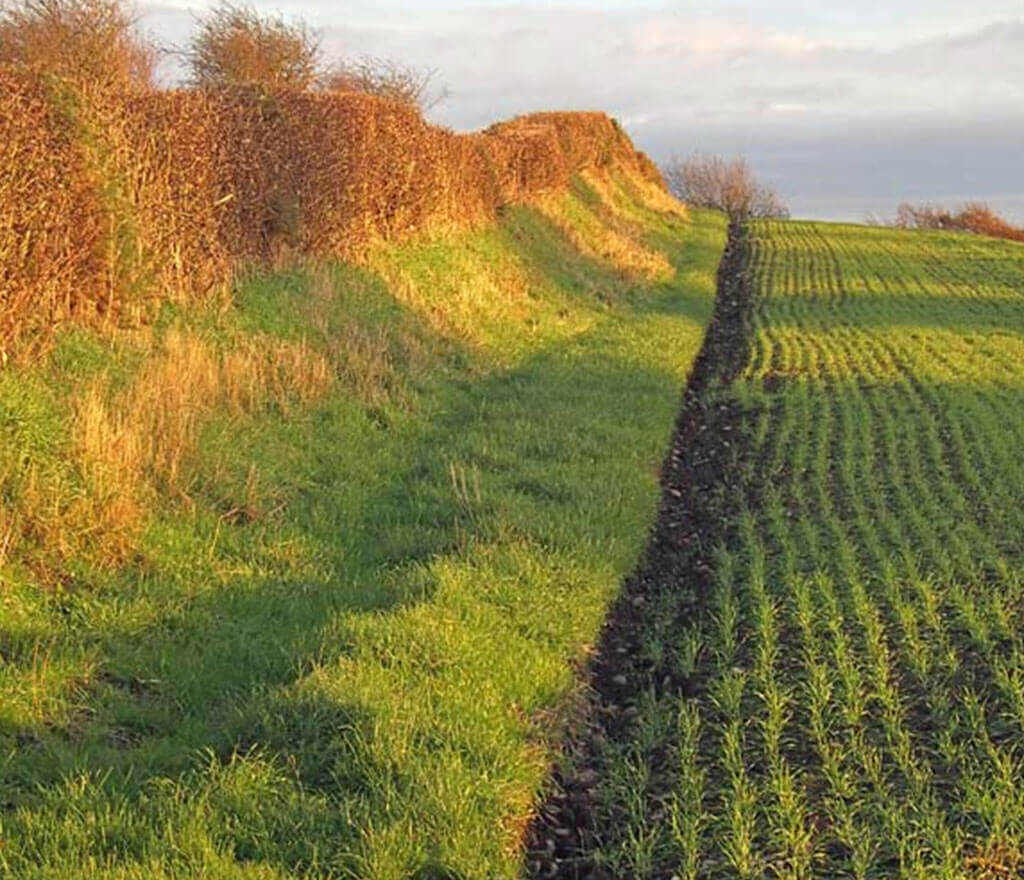
Border Areas & Buffer Strips Adjacent to Crops
Damage: Voles frequently harbor and breed in wild border areas and fence rows surrounding crops. The majority of rodent migration into crops is from borders up to 100 feet into the crop. Reducing vole populations on border areas and buffer strips is critical to reducing rodent intrusion into crop fields.
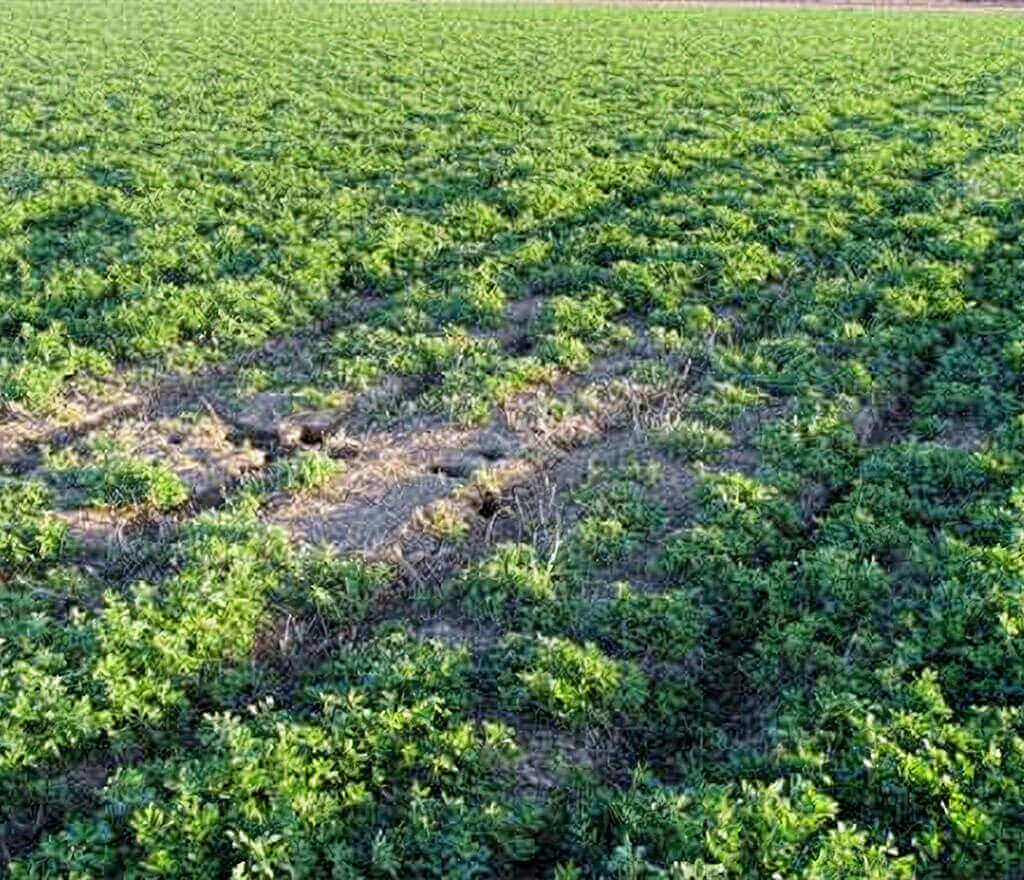
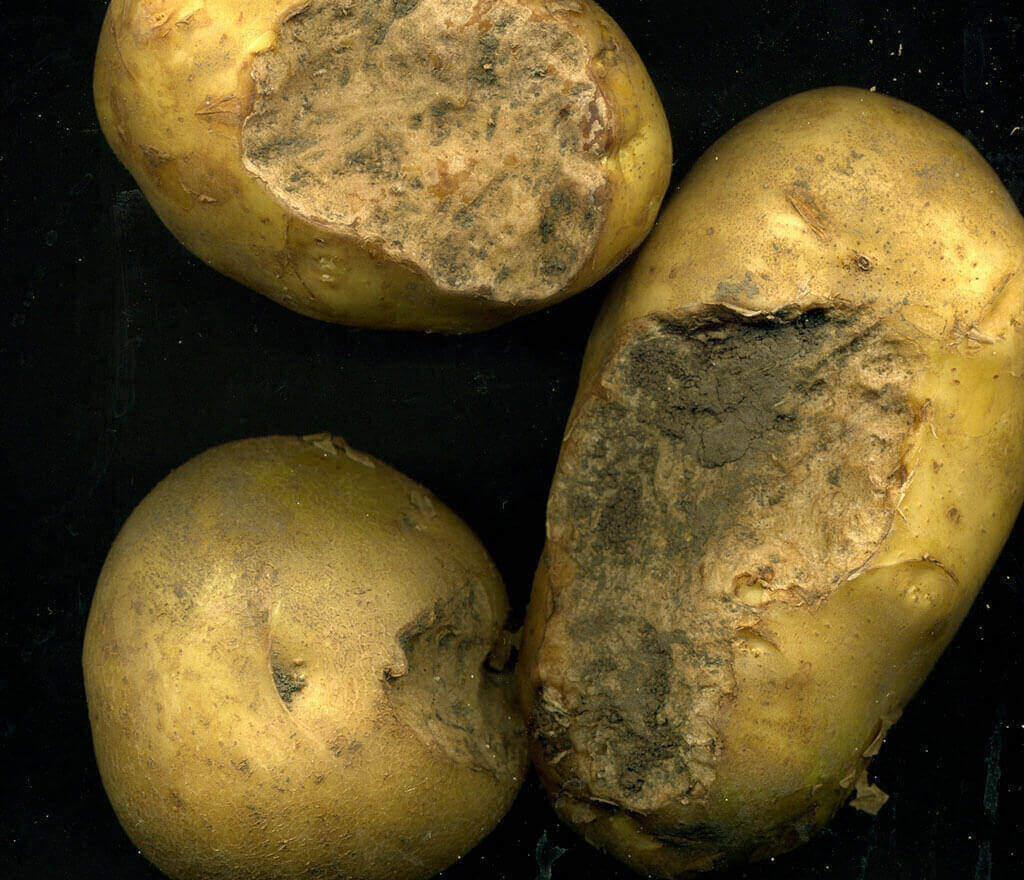
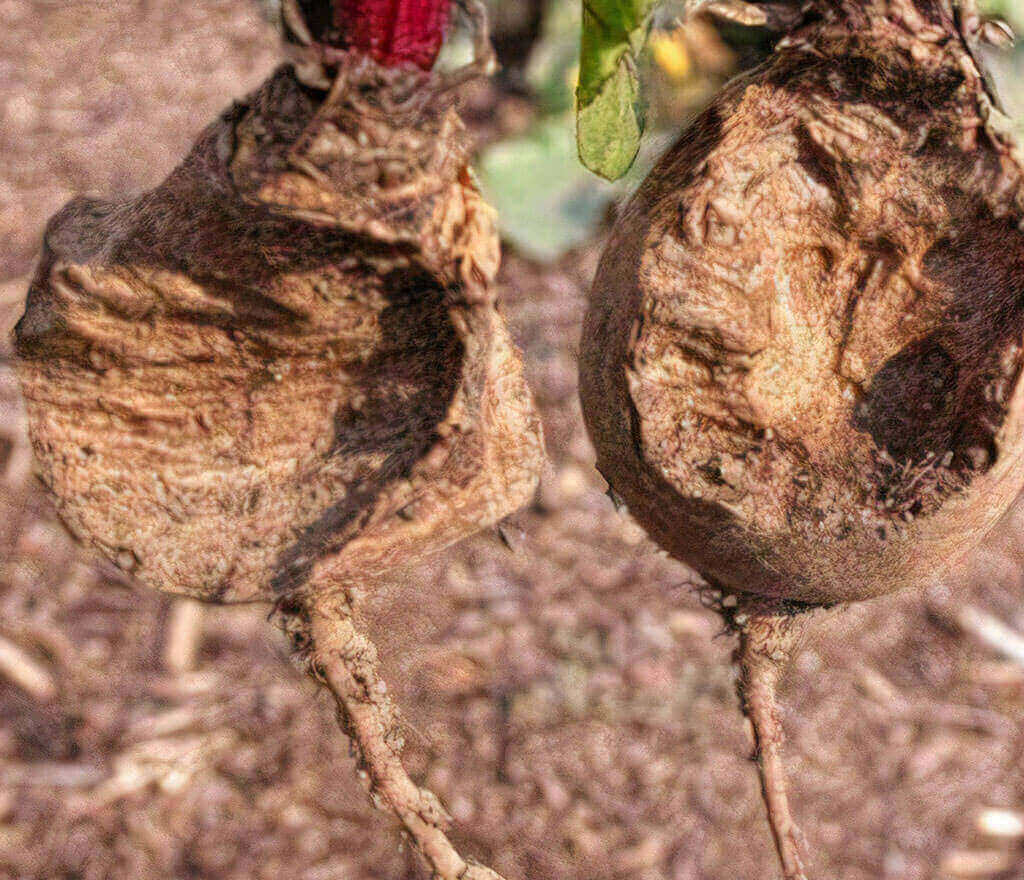
Use Restrictions: For vole pest control in commercial nurseries, tree and forestry plantations, Christmas tree farms, and border areas and buffer strips adjacent to crops (within 100 feet of the edge of the cropland). This product must not be applied directly to food or feed crops except as specified above. Do not apply within 50 feet of any body of surface water or where raptors are actively feeding on voles. Do not allow animals to graze in treated areas. Do not use hay cut after application for feed or bedding. To avoid exposing non-target organisms, follow the instructions in the Pesticide Disposal section of the label to insure proper clean-up of any bait for reuse or disposal. Apply only by hand spot baiting and ground broadcasting. Do not apply aerially. In Colorado, Florida, New York and Vermont, only apply by hand spot baiting. In Florida, only use this product where pine voles are known to occur and only apply by hand spot baiting.
Application directions: Before application, locate vole trails, runway systems and harborage areas to be treated.
Hand spot baiting: Place 1 1/2 ounces (6 tablespoons) of bait in each active hole, trail or runway (do not exceed 10 pounds per acre). Cover each placement with grass or shingle to avoid exposing non-target organisms, or place bait in a tamper resistant bait station.
Ground broadcast baiting: Using a commercial spreader, uniformly apply 10 pounds per acre. If populations are high, make a second application 1-2 months after the first. In states east of the Mississippi River, infestations of pine vole (Microtus pinetorum) may require higher application rates of 20 pounds per acre. The maximum application rate is 40 pounds per acre per year for pine voles, and 20 pounds per acre per year for other voles.
Aerial broadcast baiting (ID only): Apply at the rate of 10 pounds per acre. If infestations are high, make a second application 1-2 months following the first application. The maximum application rate is 20 pounds per acre per year. View label Idaho (EPA SLN No. ID 190004).
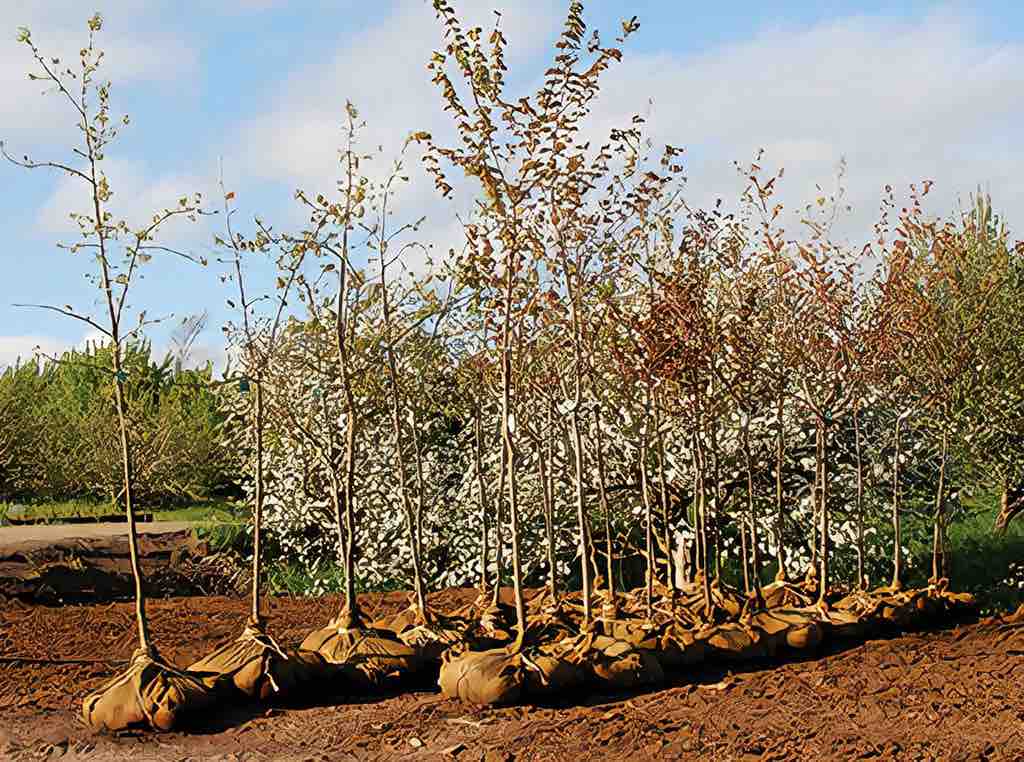
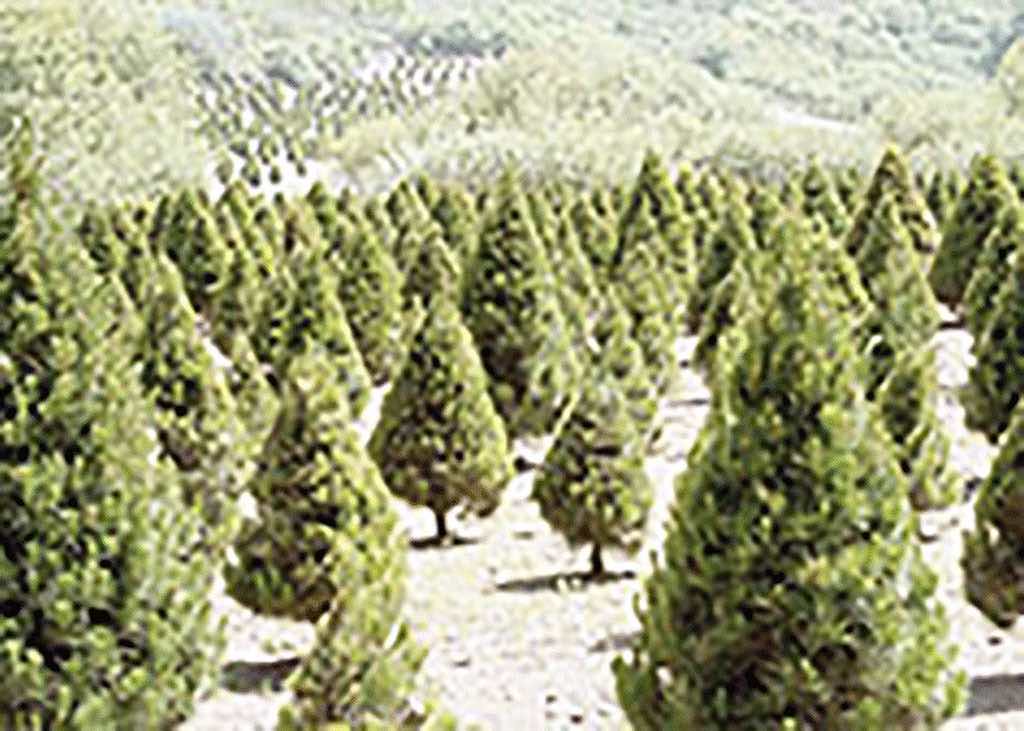
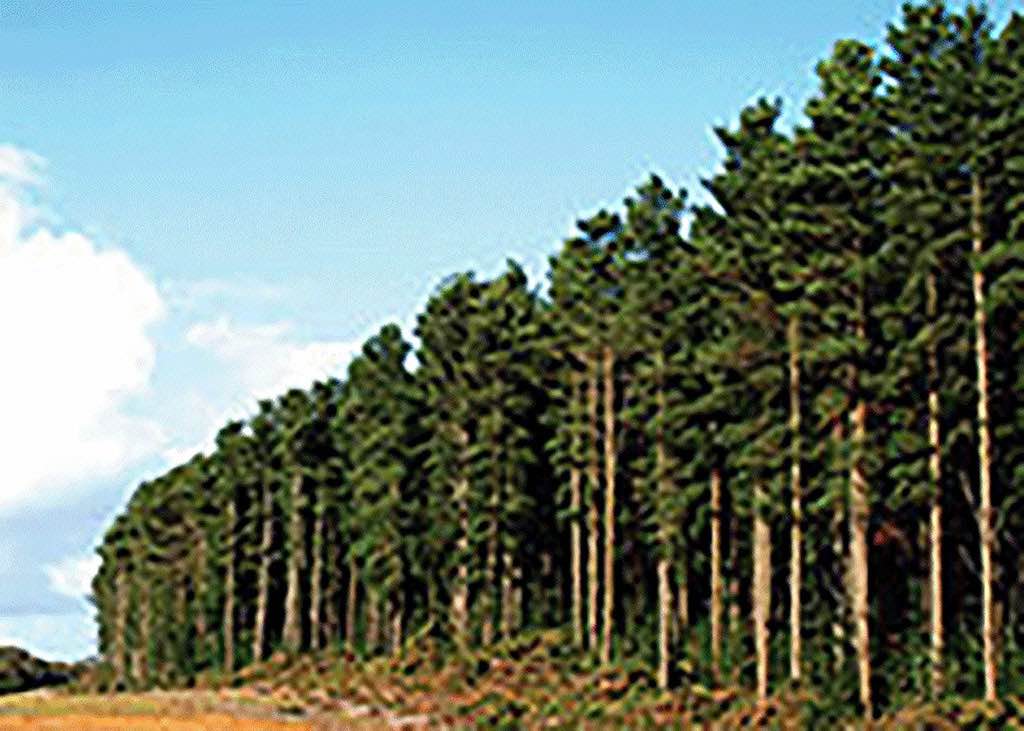
Nurseries, Christmas Tree Farms, Tree & Forestry Plantations
See information located above under Border Areas and Buffer Strips Adjacent to Crops.
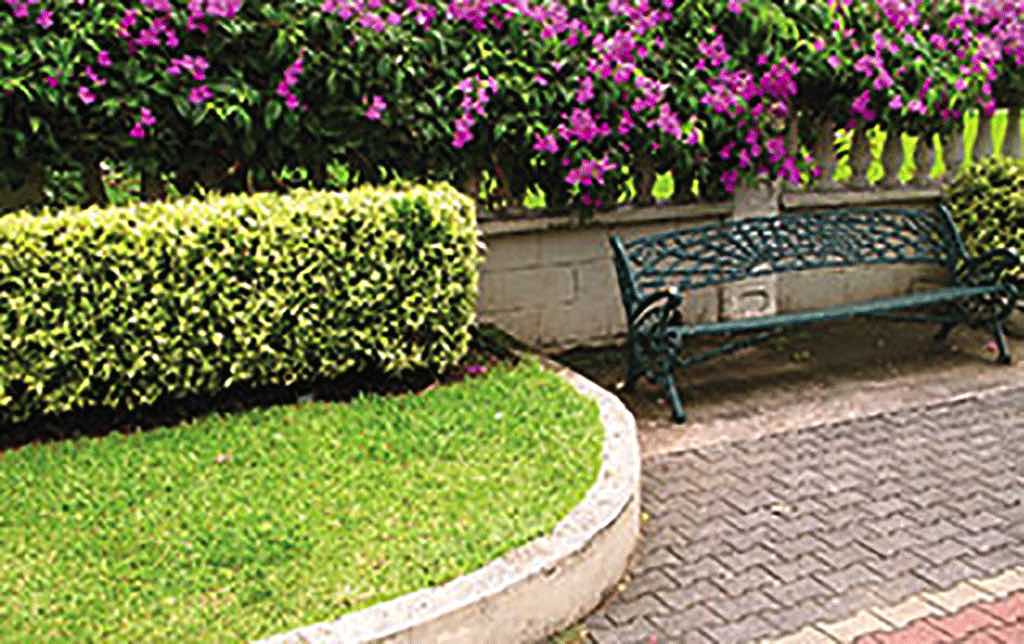
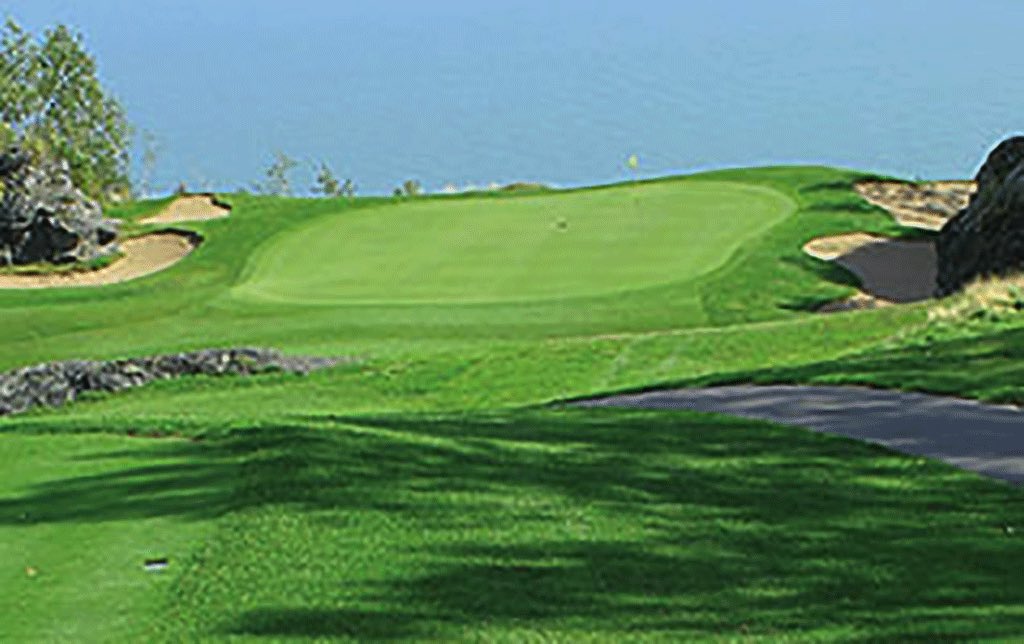
Lawns, Golf Courses, Parks, Other Ornamental Turf Areas, Ornamental Flower & Shrub Gardens
Damage: Vole feeding damage to turf and ornamentals is a nuisance for many grounds superintendents and can cause expensive damage to athletic turf and golf course greens.
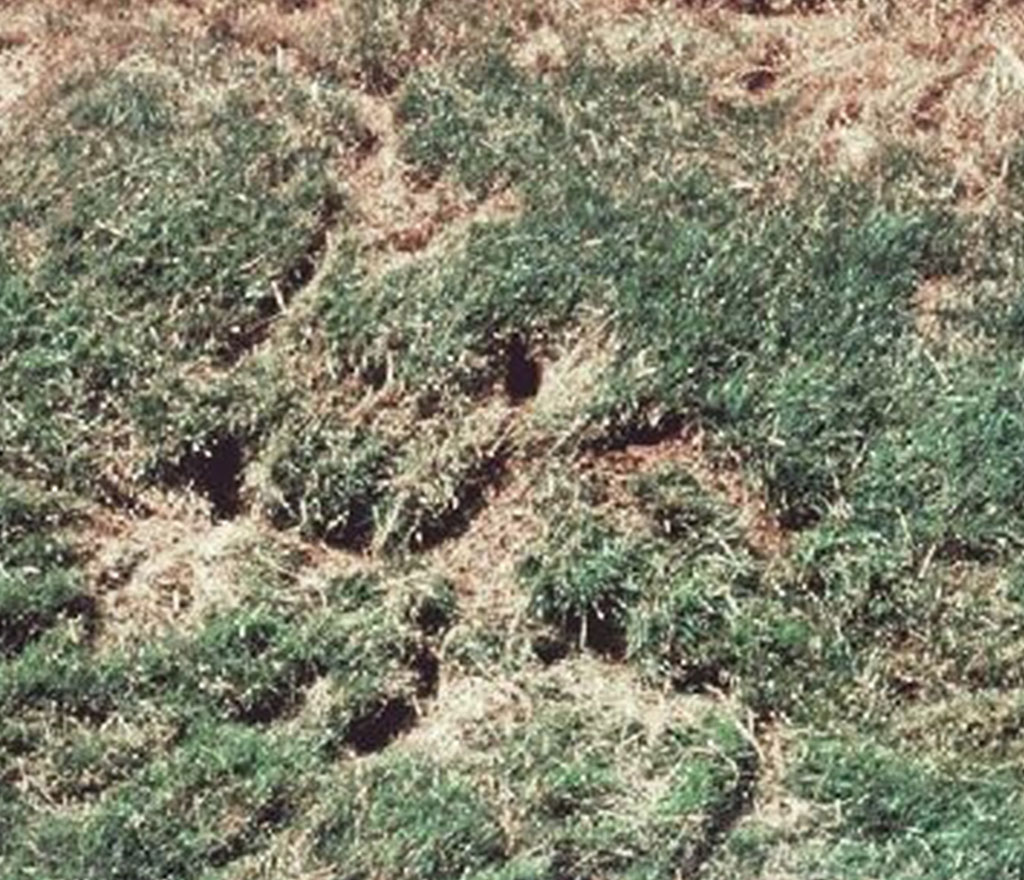
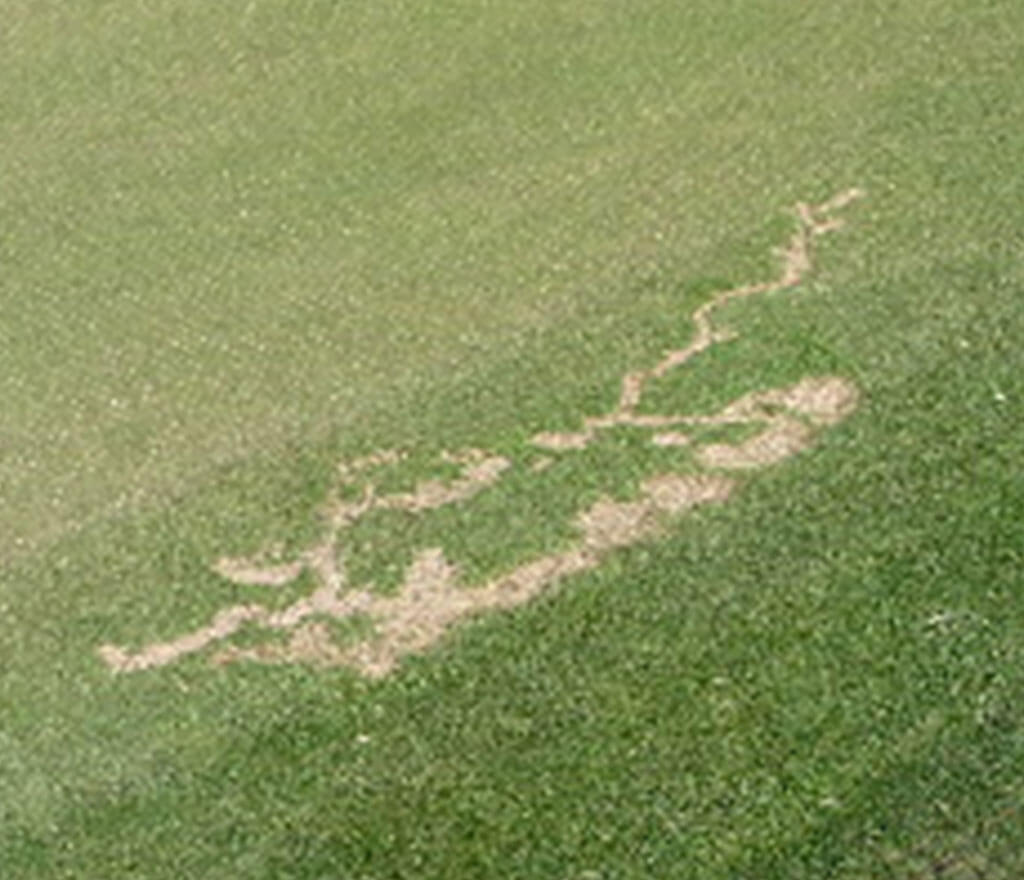
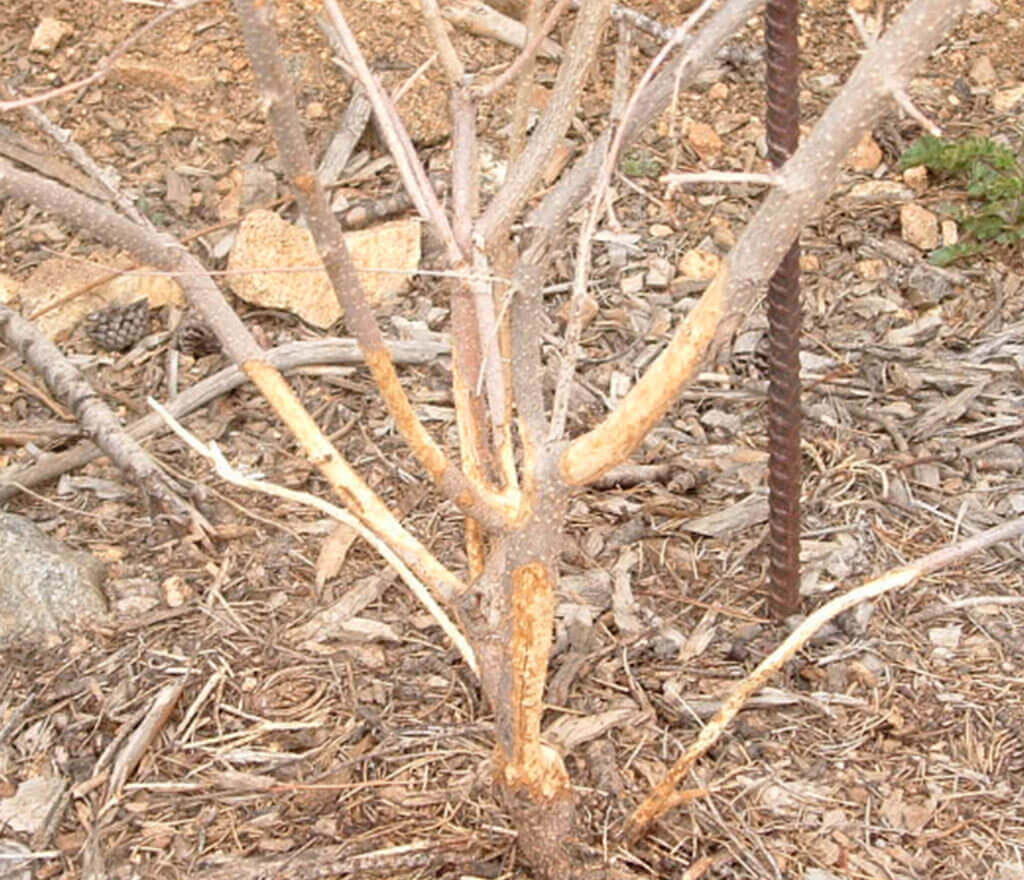
Hand spot bait only: Do not apply by aerial or ground broadcast. For vole pest control (Microtus spp.) in lawns, golf courses, parks, other ornamental turf areas, ornamental flower and shrub gardens. Place 1/2-1 ounces (2 to 4 tablespoons), of bait in each active hole, trail or runway in areas where voles have been observed or are known to forage. If non-target animals/birds are present, place bait in tamper-resistant bait stations. Also apply under tarps used to provide winter protection for turf areas. Apply only one bait spot per trail or runway. If additional vole control is needed, a second application may be made 1-2 months after the first application. The maximum application rate is 10 pounds per acre per application, and 20 pounds per acre per year. Do not apply to golf courses or turfgrass areas in the state of California.
Sources
1Effects of Differential Pine Vole Populations on Growth and Yield of McIntosh Apple Trees, Proc. Eastern Wildlife Damage Control Conference, 1987. Richmond, M.E., C.G. Forshey, L.A. Mahoffy and P.N. Miller.
2Dave Pehling & Todd Murray (WSU Snohomish Co.)
3Mark Mellbye, Field Crop OSU Ext. Agent, Linn County, and Bruce Coblenz, Prof. OSU Dept. of Fisheries & Wildlife, Bob Rost, OSU Gardening Expert – OSU News 6/28/05.
Photo credit of vole image at the top given to Loren Ayers.